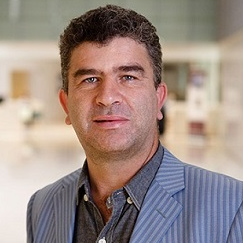Energy Efficient Sensors and Applications
A special issue of Journal of Low Power Electronics and Applications (ISSN 2079-9268).
Deadline for manuscript submissions: closed (31 January 2013) | Viewed by 44055
Special Issue Editors
Interests: CMOS Vision Sensor with Pixel level ADC (Digital Pixel Sensors) and intelligent processing; Pulse sensory image capture and processing operations; Address Inter-Event Representation CMOS Image Sensor; Robust Pattern recognition algorithms and reconfigurable neural network classifiers for miniaturized odor-sensing and electronic nose applications; Biometric sensors
Interests: CMOS smart temperature sensors; CMOS image sensors; integrated wireless sensing and biomedical systems; ultra-low power analog design techniques; energy harvesting techniques
Special Issue Information
Dear Colleagues,
The wide spread of today’s mobile and portable devices, wireless sensor network technologies as well as cutting-edge biomedical microsystems, such as the camera micro-pill, require sensing front-end that sense data from the environment, process, and transmit data using very low power. It is widely believed that Smart Sensing combined with Radio Frequency transmission as well as Radio Frequency Identification (RFID), will be the “killer App” of the future. This special issue constitutes a platform for dissemination of cutting edge research results covering energy-efficient and ultra-low power sensing, processing and RF transmission technologies for various sensing applications such as sensor network, biomedical as well as RFID.
The sensing platform to be considered for this issue cover a wide range of devices whether it is imaging, physical sensing or chemical sensing. Circuit techniques for sensor data interfacing, processing as well as RF communications and Identification will also be the subject of this issue. Such communication capabilities would enable the large scale deployment of sensors where several important constraints must be considered such as low cost, low power consumption and self-calibration to minimize human intervention. Papers proposing circuit and system level techniques tackling relevant issues such as low power and self-calibration are highly encouraged.
Prof. Dr. Amine Bermak
Dr. Man Kay Law
Guest Editors
Manuscript Submission Information
Manuscripts should be submitted online at www.mdpi.com by registering and logging in to this website. Once you are registered, click here to go to the submission form. Manuscripts can be submitted until the deadline. All submissions that pass pre-check are peer-reviewed. Accepted papers will be published continuously in the journal (as soon as accepted) and will be listed together on the special issue website. Research articles, review articles as well as short communications are invited. For planned papers, a title and short abstract (about 100 words) can be sent to the Editorial Office for announcement on this website.
Submitted manuscripts should not have been published previously, nor be under consideration for publication elsewhere (except conference proceedings papers). All manuscripts are thoroughly refereed through a single-blind peer-review process. A guide for authors and other relevant information for submission of manuscripts is available on the Instructions for Authors page. Journal of Low Power Electronics and Applications is an international peer-reviewed open access quarterly journal published by MDPI.
Please visit the Instructions for Authors page before submitting a manuscript. The Article Processing Charge (APC) for publication in this open access journal is 1800 CHF (Swiss Francs). Submitted papers should be well formatted and use good English. Authors may use MDPI's English editing service prior to publication or during author revisions.
Keywords
- circuit and system level design techniques for sensor network applications
- smart and ultra-low power sensing
- energy-efficient sensors and interfaces
- nano-technology for sensing
- low-power and/or energy efficient temperature sensors
- energy efficient humidity and gas sensors
- RF communication and identification for sensors network, smart RFID applications






